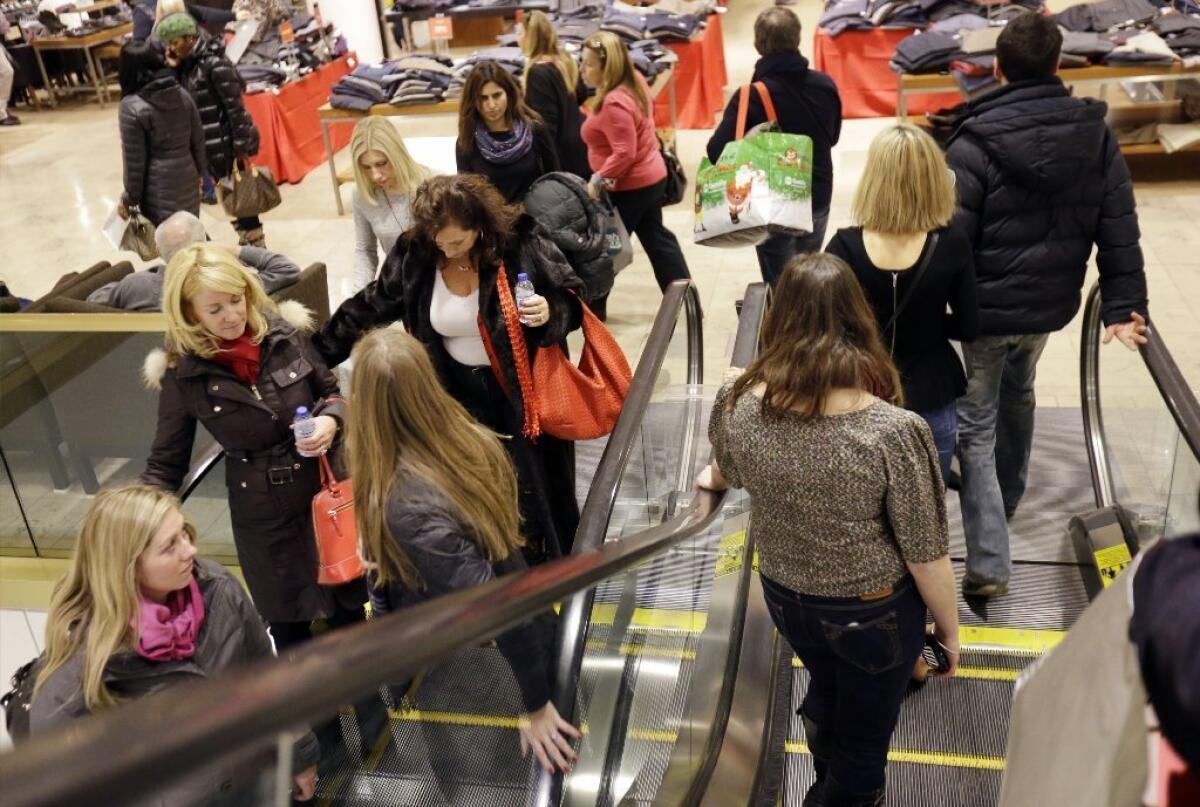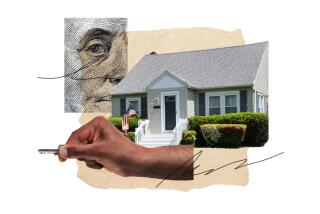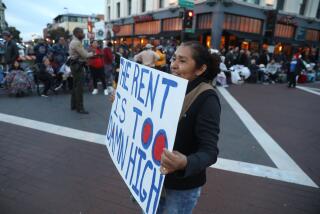Income inequality begins to hit business in the pocketbook

- Share via
There’s a new element in the debate over U.S. income inequality, and it’s one that may actually get our political leadership talking about ways to address the issue: businesses are beginning to notice that their middle-class customers have disappeared.
The consumer market is beginning to look like a sandwich without meat in the middle--there are enough wealthy customers to keep the luxury market humming along, and a growing demand for cheap no-name and other bargain products.
The phenomenon has been reported by Matthew Yglesias of Slate.com and more recently by Nelson Schwartz of the New York Times. As we reported here and here, it’s been building for years. But it really picked up steam after the last recession, when the imbalance in income between the top 1% and everyone else has really taken off.
Most economists view the stranglehold of the wealthy on U.S. income and wealth as a problem--it leads to slower overall growth and more volatility. As economist Jared Bernstein has observed, it also promotes the creation of asset and credit bubbles, which have a tendency to burst, taking the rest of the economy with them.
The most important analysis of the economic impact of inequality has come from Barry Z. Cynamon and Steven M. Fazzari of Washington University in St. Louis. In a paper published last month, they ask two questions: “First, did rising inequality contribute in an important way to the unsustainable increase in household leverage that triggered the collapse in consumer demand and the Great Recession? Second, has the rise in inequality become a drag on demand growth...that has held back recovery?”
Their answer to both questions is yes. In simpler terms, rising inequality before the recession prompted U.S. households to borrow more to keep up their spending; when the debt frenzy ended (because of the bursting of the housing bubble) the economy crashed. Since then, the demand drag caused by the effect of inequality on the bottom 95% has held back recovery. The impact of inequality on the recovery, compared with previous recoveries, is shown in this stunning graph from their paper.
Amazingly, some economic pundits still want to ignore the implications of this trend for public policy. One is Robert Samuelson of the Washington Post, who this weekend acknowledged that “the gap between the rich and the poor is enormous, wider than most Americans would (almost certainly) wish,” but dismissed “economic inequality (as) a misleading intellectual fad, blamed for many of our problems.” In fact, he wrote, “economic inequality is usually a consequence of our problems and not a cause.”
Samuelson states that “the poor are not poor because the rich are rich,” arguing that the two trend lines are independent. For backup, he cites a Congressional Budget Office study of economic gains from 1979 to 2010 that, he says, “found sizable gains for all income groups.”
But that stretches the term “sizable” to the breaking point. The CBO found that the bottom 20% gained an average of 1.3% in income a year during that period. The middle three quintiles gained 1.1% a year. The top 80 to 99% gained 1.6%, and the top 1% gained 3.6% in average annual income. Another stunning graph showing this trend is here.
During the whole period, the U.S. economy grew at an average annual rate of 2.74%. That means that no one shared fully in the nation’s economic gains--except the 1%, who snarfed up what looks to be well more than their share. During the recent recovery, the trend has gotten worse: from 2009 to 2010, the CBO reported, every quintile gained about 1% or less; the top 20% gained more than 5%.
For years, the problem of economic inequality has been treated as an abstract. It’s getting more real by the minute. The struggles of the bottom 99% are directly related to the gains of the top 1%. The consequences of this imbalance are finally being recognized, and the sooner it’s addressed by policymakers, the better it will be for rich and poor alike.
More to Read
Inside the business of entertainment
The Wide Shot brings you news, analysis and insights on everything from streaming wars to production — and what it all means for the future.
You may occasionally receive promotional content from the Los Angeles Times.











